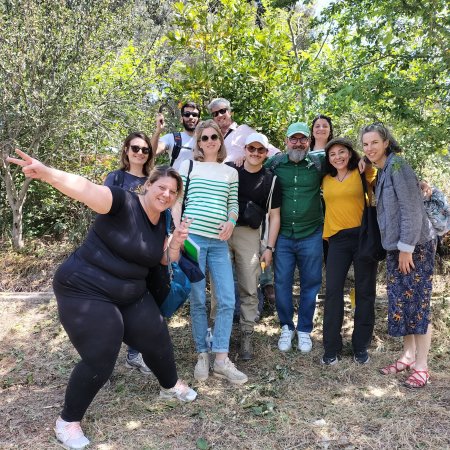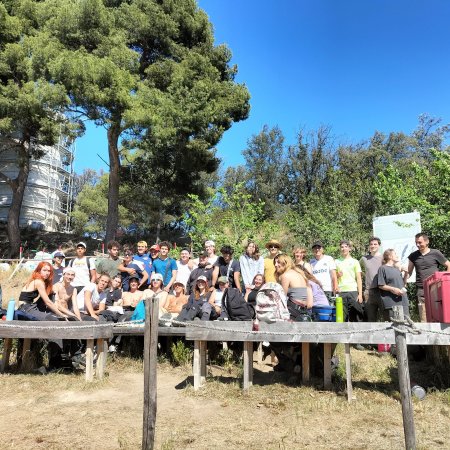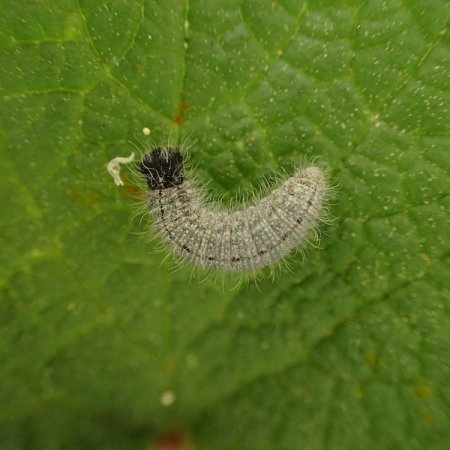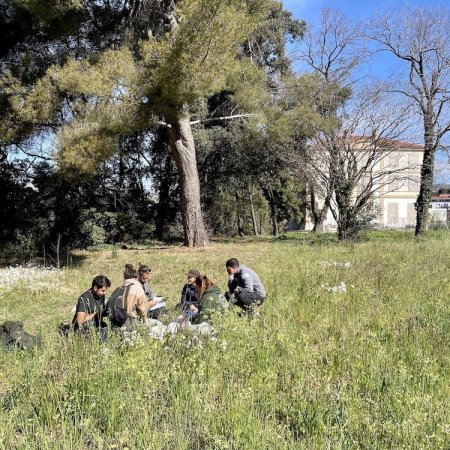Les actualités
Les travaux réalisés en 2010 sur les papillons de jour dans les parcs urbains de Marseille ont mis en évidence une richesse en espèces insoupçonnée (45 espèces), mais une diminution du nombre d'espèces et du nombre d'individus de la périphérie vers le centre ville. Ces recherches ont également démontré une perte d'espèces méditerranéennes suivant ce gradient.
Afin de suivre cette biodiversité urbaine sur le long terme et de comprendre son évolution, le Laboratoire Population Environnement Développement (LPED) met en place en 2012 un dispositif expérimental de recherche unique en France : le Parc Urbain des Papillons (PUP). Il s'agit de créer une zone attractive et un havre de paix pour les papillons au coeur de la deuxième Ville de France. C'est cette démarche que nous souhaitons partager.
Afin de suivre cette biodiversité urbaine sur le long terme et de comprendre son évolution, le Laboratoire Population Environnement Développement (LPED) met en place en 2012 un dispositif expérimental de recherche unique en France : le Parc Urbain des Papillons (PUP). Il s'agit de créer une zone attractive et un havre de paix pour les papillons au coeur de la deuxième Ville de France. C'est cette démarche que nous souhaitons partager.
Enjeux et objectifs
Partenaires et financeurs
On parle de nous ...
Made in Marseille reportage Olivia Chaber 2024
Silence ça pousse 2014
Ressources HAL
12.12.2025 [hal-05410113] Promoting a Cotesia species as first biological control agent against the Mediterranean corn borer source : lépidoptère
The Mediterranean corn borer (MCB) is a major corn pest causing significant yield losses, which leads to the use of insecticides in France. In the native range, its caterpillars are attacked by the insect parasitoid, Cotesia typhae, a potential biological control agent against MCB. In the CoteBio project, we tested the parasitism efficiency of C. typhae in greenhouses and estimated the environmental risk of introducing this non-native species in France. In greenhouses, a single release of C. typhae resulted in a 98% reduction in the MCB population. The risk to non-target species was tested on 8 lepidoptera. On average, only 4.4% of caterpillars died following parasitism, and only 0.4 to 2% of caterpillars of 4 species allowed parasitoid development. The likelihood of C. typhae establishing in the French environment is further compromised by its sensitivity to winter temperatures (10-15°C). A new Ecophyto project, BIOCOSMA, aims to develop a biological control solution against the MCB through annual releases of C. typhae in the field.
08.12.2025 [tel-05405032] Multichroic detectors for cosmic microwave background polarization observation source : papillon
The study of polarization anisotropies in the Cosmic Microwave Background (CMB) appears nowadays to be an essential way to advance our understanding of the evolution of the Universe. The detection of B-mode polarization at large angular scales, generated by primordial gravitational waves from the inflationary epoch shortly after the Big Bang, remains a major challenge in millimeter-wave astronomy due to its extremely faint signal and prone to various systematic effects. Since current cryogenic sensors are already limited by photon noise from the power background, there is a growing need for next-generation CMB telescopes with a substantial focal plane number of detectors to increase sensitivity. Multichroic detectors offer a viable pathway to realize such large format arrays, as they can efficiently utilize the focal plane area and allow sky observations across multiple frequency bands, which is essential for foreground reduction in B-mode polarimetry. Antenna-coupled microwave kinetic inductance detectors (MKIDs) present a favorable architecture for multichroic pixel design. Because MKIDs have built-in multiplexing advantages over traditional bolometers, the lens-integrated antenna can provide wide bandwidth with polarization-sensitive beams that couple efficiently to receiver optics. In addition, their planar structure allows accommodation of on-chip bandpass filters, resulting in a compact design. This thesis presents the development of lenslet-coupled antenna multichroic pixels based on MKID technology, with an extensive investigation of design and simulation methodologies. The proposed pixel features an improved broadband slot antenna as its receiver - the Double Flare Angle (DFA) bowtie antenna, which provides adequate aperture efficiency of more than an octave range of 100 - 300 GHz. The antenna aims to provide bandwidths exceeding 20% for two CMB-targeted atmospheric transparent subbands at 150 GHz and 220 GHz, while maintaining effective linear polarization sensitivity and a cross-polarization level below -16 dB, achieved by placement in the second focus of an elliptical lens. The captured signal is then passed through a superconducting microstrip low pass filter to remove excess frequencies before entering the diplexer where the two bands are separated. These bands are separately coupled to the inductive sections of dedicated MKIDs, effectively modifying the resonant frequency and quality factor of the corresponding resonators.
03.12.2025 [hal-05395586] A multiscale survey of the “Buckle Gum”: Hydrostatic response of elastomers filled with hollow thermoplastic microspheres source : papillon
Buckle Gum" refers to elastomer matrix composites filled with hollow thermoplastic microspheres (HTM). These particles are attracting particular attention for applications involving pressure, since they are capable of reversible deformation, unlike their glass counterparts usually used in syntactic foams. This work provides direct evidence of this deformation under in situ conditions, using an experimental hydrostatic compression set-up embedded in a tomograph. The HTMs buckle at a certain critical pressure, beyond which shrinkage and loss of sphericity are observed, characteristic of a post-buckling regime. The resulting volume change across the microsphere population appears independent of volume fraction up to 10 bars, and is predominantly governed by the response of the largest particles. This observation corroborates hydrostatic compression tests conducted on the composite, analysed using an alternative imaging technique. Upon return to ambient pressure, nearly all HTMs recover their initial shape and volume without exhibiting damage. Our inverse modelling approach, supported by both tomographic and macroscopic experiments, reproduces the microspheres response for pre-and post-buckling regimes thanks to two complementary model branches based on the Composite Spheres Assemblage theory. Even though they cannot yet be unified, they provide a consistent framework for future modelling investigations.
02.12.2025 [hal-05393820] 3D Modeling of Solar Oscillations with Hybridizable Discontinuous Galerkin Method source : papillon
With increasing quantity and quality of solar observations, it becomes essential to account for three-dimensional heterogeneities in wave modeling for seismic data interpretation. In this context, we present a 3D solver of the time-harmonic adiabatic stellar oscillation equations without background flows on a domain consisting of the Sun and its photosphere. The background medium consists of 3D heterogeneities on top of a radial strongly-stratified standard solar model. The oscillation equations are solved with the Hybridizable Discontinuous Galerkin (HDG) method, considering a first-order formulation in terms of the vector displacement and the pressure perturbation. This method combines the high-order accuracy and the parallelism of DG methods while yielding smaller linear systems. These are solved with a direct solver, with block low-rank compression and mixed-precision arithmetic to reduce memory footprint. The trade-off between compression and solution accuracy is investigated, and our 3D solver is validated by comparing with resolution under axial symmetry for solar backgrounds. The capacity of the solver is illustrated with wave speed heterogeneities characteristic of two physical phenomena: active regions and convection. We show the importance of global 3D gravito-acoustic wave simulations, in particular when the amplitudes of the perturbations are strong and their effect on the wavefield cannot be estimated by linear approximations.
26.11.2025 [hal-05383946] Nymphettes vs nymphes de papillon dans Lolita source : papillon
[...]
21.11.2025 [hal-05376133] Mesofauna Activity and Soil Pore Space Dynamics: Temporal Analysis Using X-ray Microtomography source : papillon
Mediterranean agroecosystems, which account for a substantial portion of European horticultural production, are particularly vulnerable to the effects of climate change. This vulnerability is exacerbated by soil degradation, rising temperatures, and the increased frequency of extreme weather events. To ensure a successful agroecological transition in these regions, it is crucial to preserve the ecosystem services provided by soils. Soil fauna plays a key role in the exchanges between atmosphere and pedosphere through the edaphic fauna activity, thereby influencing the transfer of mass and energy within the soil, a porous and dynamic medium. This study focuses on the impact of bioturbation activities of enchytraeids on the structure of soil pore space. Enchytraeids are Annelida Oligochaeta that measure between 100 and 2000 µm in diameter and 6 to 50 mm in length. They are ubiquitous in soils and present in various ecosystems. Recognized as model organisms for their role in decomposing organic matter and as bioindicators of soil health, their bioturbation activity creates a network of galleries that remains understudied to date. Yet, a recent experimental study has demonstrated that enchytraeids modify the pore space configuration and shift the pore size distribution around their diameter. An ongoing experiment is set to observe the evolution of this pore space under the influence of enchytraeid bioturbation. This study aims to examine changes in the morphological and hydraulic properties of soil over time, using experimental mesocosms observed via X-ray microtomography. Three experimental conditions are being tested: (i) the presence of 60 individuals (30 E. bulbosus, 30 E. lacteus), representing a typical density of representative species in Mediterranean soils, (ii) 10 individuals (5 E. bulbosus, 5 E. lacteus), and (iii) no enchytraeids (control). The samples are then subjected to water transfer in a specially developed experimental rain simulator. The results highlight the importance of considering the modifications of pore space induced by soil mesofauna, a factor currently overlooked in models of energy and mass transfer at the soil profile scale.
07.11.2025 [tel-05354043] Étude de l'effet antifongique du peptide antimicrobien ETD151 sur Aspergillus fumigatus source : lépidoptère
La colonisation bronchique par Aspergillus fumigatus (Af) constitue une source majeure de complications infectieuses chez les patients atteints de maladies pulmonaires chroniques. L'efficacité limitée des antifongiques disponibles, associée à l'émergence croissante de souches résistantes aux azolés, rend nécessaire l'exploration de nouvelles stratégies thérapeutiques. Dans ce contexte, les peptides antimicrobiens (PAM) constituent une alternative prometteuse. Le peptide modifié ETD151, dérivé d'un PAM de lépidoptère, a notamment démontré une activité antifongique contre Botrytis cinerea, un champignon phytopathogène. L'objectif de cette thèse était d'évaluer l'effet anti-Aspergillus d'ETD151 ainsi que son éventuel rôle sur la réponse inflammatoire des cellules épithéliales bronchiques primaires humaines (CEBPH). Le peptide a été testé sur des souches sensibles et résistantes aux azolés, avec des résultats probants. ETD151 induit un raccourcissement et une hyper-ramification des filaments fongiques. Un test cinétique à la résazurine a révélé une inhibition significative de l'activité métabolique, atteignant un maximum avec 1,25 µM d'ETD151. L'activité lytique du peptide a été confirmée par des colorations au calcofluor et au Sytox Green. Des essais de compétition, ainsi que l'utilisation d'une souche de Af délétée pour un gène codant les glucosylcéramides, ont permis de confirmer que ces lipides membranaires sont la cible de ETD151. Par ailleurs, des repiquages successifs sur 16 génération du champignon en présence de ETD151 n'ont pas permis de mettre en évidence le développement de résistance du champignon vis avis du peptide. Enfin, le peptide ne provoque ni libération d'IL-8 par les CEBPH, ni cytotoxicité. Enfin, son effet antifongique sur les CEBPH infectées par Af a été confirmé par dénombrement des CFU et observation en microscopie confocale. Ces résultats soulignent le potentiel des PAM comme agents antifongiques innovants, notamment face aux souches résistantes aux traitements conventionnels.
07.10.2025 [hal-05302490] Elevage de la mineuse des aiguilles du sapin Epinotia subsequana (Lepidoptera : Tortricidae) en conditions de laboratoire source : lépidoptère
[...]
08.09.2025 [hal-05245380] Analyse fonctionnelle des vankyrines du polydnavirus HdIV source : lépidoptère
Pour de nombreux endoparasitoïdes ichneumonides, le succès parasitaire dépend de leur association avec un polydnavirus symbiote. Les particules virales, produites exclusivement dans les ovaires, sont injectées dans la chenille du lépidoptère au moment de l’oviposition. L’expression des gènes viraux dans les tissus infectés induit des altérations importantes dans la croissance, le développement et la réponse immunitaire de l’hôte, ce qui permet le développement de la progéniture du parasitoïde. Les gènes vankyrines constituent une famille multigénique que l’on retrouve dans tous les génomes de polydnavirus séquençés jusqu’à présent. Ils codent pour des protéines homologues aux facteurs IkappaBs, inhibiteurs des facteurs de transcription Rel/NF-kB, dont le représentant le plus étudié chez les insectes est la protéine Cactus de Drosophila melanogaster. Les vankyrines possèdent un domaine ARD constitué de quatre répétitions de type ankyrines qui, chez les IkBs sont essentielles pour leur interaction avec les facteurs NF-kB. Mais contrairement aux IkB cellulaires, les vankyrines n'ont pas les domaines de régulation nécessaires à la dissociation du complexe NF-kB/IkB : elles formeraient donc un complexe irréversible avec les NF-kB, ce qui aurait pour conséquence d’empêcher les NF-kB de se fixer sur leurs sites kB et donc empêcherait l’expression de gènes impliqués dans la réponse immunitaire et/ou le développement de l’hôte parasité. Nous avons identifié neuf gènes vankyrines dans le génome du polydnavirus HdIV, présent chez Hyposoter didymator [Hyménoptère : Ichneumonidae], un endoparasitoïde larvaire de certaines noctuelles, appartenant notamment au genre Spodoptera spp. L’analyse spatio-temporelle des vankyrines de HdIV a mis en évidence l’expression largement prédominante de la vankyrine Hd27-vank1 au cours du parasitisme des larves de S. frugiperda par H. didymator. Pour tenter de comprendre le rôle de Hd27-vank1, nous avons produit un baculovirus recombinant exprimant la protéine virale. Nous avons alors mesuré les effets de l’expression de la protéine virale sur la viabilité des larves de S. frugiperda et des cellules Sf9 infectées avec le baculovirus recombinant. Nous présenterons les résultats obtenus au cours de ce congrès.
19.06.2025 [hal-05121303] Cushion plants in the Alps are swarming with invertebrate life source : lépidoptère
Cushion plants, which dominate nival ecosystems, are known to host a large diversity of plant, microbe, and animal life. However, a comprehensive assessment of this diversity is still lacking, particularly with regard to invertebrate soil fauna. In this study, we sampled soil beneath cushion plants in various climatic and geological conditions throughout the French Alps. Our results demonstrate that cushion plants host a remarkably high abundance and diversity of invertebrates, with some individual cushions hosting nearly 400 specimens belonging to 15 different families. Across all samples, 8845 specimens were found. The taxonomic diversity is particularly notable, with groups such as Collembola, Acari, and Nematoda, as well as Gastropoda, Diptera, Coleoptera, Hymenoptera, and Hemiptera. In total, 44 different families were identified. In particular, our findings show that cushion plants not only function as habitats for adult invertebrates, but also as site for the egg laying and larval development of several insect groups, including Diptera, Hemiptera, and Lepidoptera. In addition, different species of cushion plant tend to host distinct invertebrate communities, which makes them a key driver spatial variation in invertebrate populations. However, the factors determining the alpha diversity of invertebrates assemblages in nival environments remain unclear. Overall, our results emphasize the key role of cushion plants in maintaining biodiversity in the nival vegetation belt.
Vous souhaitez créer un PUP ?
Parce qu'il est important de favoriser les papillons en ville, nous vous encourageons à créer des PUP dans toutes les villes et les villages.
🦋 Pour vous donner un aperçu de ce dispositif et vous donner envie de le reproduire, notre démarche.
🦋 Pour le reproduire près de chez vous, le mode d'emploi.
🦋 Pour le reproduire près de chez vous, le mode d'emploi.
Biodiversité urbaine Butterfly Chenille Insectes LPED Marseille Nature Nature en Ville PUP Papillon Papillons Parc Rhopalocères Écologie Écologie Urbaine




